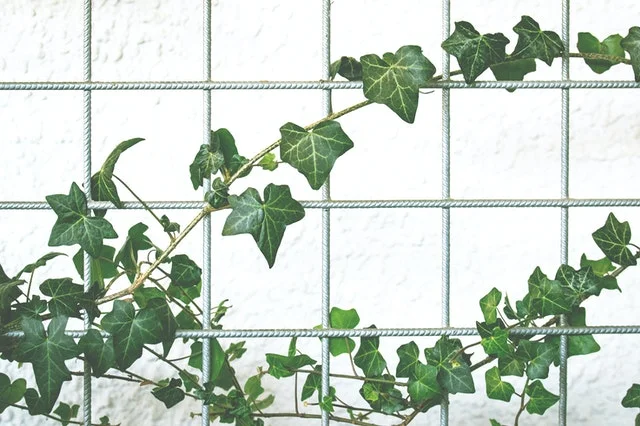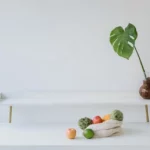A houseplant is an ideal way of adding decor to the home, especially when they are as lovely as an ivy tree.
This type of plant is a cross between an English ivy and the glossy-leaved paper plant. The result is a glossy leaved paper plant shaped like a shrub with five-lobed leaves like the English ivy.
Ivy leaves can grow between four and ten inches wide. They develop from the plant’s trailing stems. Sometimes the leaves grow in mounds, but this can be prevented over time by pruning the foliage to the desired shape.
Table of Contents
How To Care For An Ivy Tree
This perennial is often grown for its beautiful dark green foliage. However, the plant also produces clusters of little cream-colored flowers in autumn. The vine-like plant is moderate in its growth rate, especially when it is taken care of properly.
What does your ivy tree require?
The plant, also known as tree ivy and bush ivy, requires simple regular care to thrive. Proper care not only helps the greenery to stay healthy, but it also encourages the flowers to grow as they should. The basic requirements are as listed below.
- Light Requirements: In nature, the foliage grows in dappled light. As a houseplant, it needs bright but indirect sunlight. Too much light, especially when direct, can cause the leaves to burn. Too little light causes the leaves to become dull with weak stems.
- Light Requirements: In nature, the foliage grows in dappled light. As a houseplant, it needs bright but indirect sunlight. Too much light, especially when direct, can cause the leaves to burn. Too little light causes the leaves to become dull with weak stems.
- Light Requirements: In nature, the foliage grows in dappled light. As a houseplant, it needs bright but indirect sunlight. Too much light, especially when direct, can cause the leaves to burn. Too little light causes the leaves to become dull with weak stems.
- Light Requirements: In nature, the foliage grows in dappled light. As a houseplant, it needs bright but indirect sunlight. Too much light, especially when direct, can cause the leaves to burn. Too little light causes the leaves to become dull with weak stems.
- Light Requirements: In nature, the foliage grows in dappled light. As a houseplant, it needs bright but indirect sunlight. Too much light, especially when direct, can cause the leaves to burn. Too little light causes the leaves to become dull with weak stems.
- Light Requirements: In nature, the foliage grows in dappled light. As a houseplant, it needs bright but indirect sunlight. Too much light, especially when direct, can cause the leaves to burn. Too little light causes the leaves to become dull with weak stems.
Extra Tips For An Ivy Tree
While knowing the basic guidelines for caring for an ivy tree is necessary, extra tips can help with other aspects of its growth, development, and propagation.
Pests and Diseases
Ivy trees don’t often have many issues with pests and diseases. However, there are some to occasionally look out for. When checking for such issues, caregivers are advised to wear gloves to prevent skin irritation.
- Spider Mites: Such pests are little spiders, red, white, or black. They can be found upon inspection of the leaves.
- Mealybugs: These insects are small white or light pink segmented creatures that leave a white wax-like substance on plants. Typically, they settle under leaves where they can suck the nutrients from those areas.
- Aphids: The small insects are often reddish-orange and black, and they can damage a plant if not caught quickly.
- Bacterial Leaf Spot: This disease may appear as brown spots on the leaves. The bacteria may live on the leaves for a long time before presenting symptoms.
- Root and Stem Rot: Several specific fungi that cause root and stem rot. One of the most common causes of the diseases is overwatering. The illnesses display themselves as yellowed leaves that start to turn brown. Black areas appear as the illness starts to worsen. With root rot, the discolored areas spread from the bottom to the top areas of the plant as the fungus grows.
In most cases, damage from pests can be curtailed by eliminating the infestation and cutting off damaged leaves and stems. The insects can be dealt with through insecticides and insecticidal soap.
In the case of mealybugs, individual insects can be killed immediately through the application of rubbing alcohol. Signs of these creatures is the actual sighting of them, but also yellowing leaves and wilting stems.
Fungal and bacterial diseases often cause yellowed leaves as well as brown or black spots on those areas and the stems.
Root rot may cause areas by the soil to turn black. Fungicides are applied to treat root and stem rot, while biological and microbial sprays offer solutions to bacterial diseases. Along with these treatments, damaged areas of the plants should be trimmed.
Tree ivy may require replanting for any of these issues. This process is often recommended to ensure the potting mix is clean and uncontaminated.
Pruning
It is possible to prune these plants lightly, even to the point of creating the desired shape. In fact, pruning may be wise to prevent it from starting to look scraggly.
Caregivers who prefer the bushier plant-shape are recommended to pinch any new growth from off the stems to encourage additional branching.
Propagation
Ivy trees cannot be propagated from seed. The plants must be grown using stem cuttings. Growth occurs easily using this method. A six-inch-long cutting is required for this process.
The leaves on the lower part of the stem need to be removed, and the cut end of the stem dipped into rooting hormone. The stem can then be planted into a potting mix.
The planted cutting should be placed into a warm area, bright but without direct sunlight. The potting soil must be kept moist but not overwatered.
The caregiver can find out if roots have developed by lightly tugging on the stem. If there is a slight resistance, roots have formed.
Toxicity
All ivy trees are poisonous to people and animals. This toxicity is through both skin contact and ingestion.
The plant should be kept out of reach of children and animals. Gloves should be worn while planting, pruning, and propagating.



